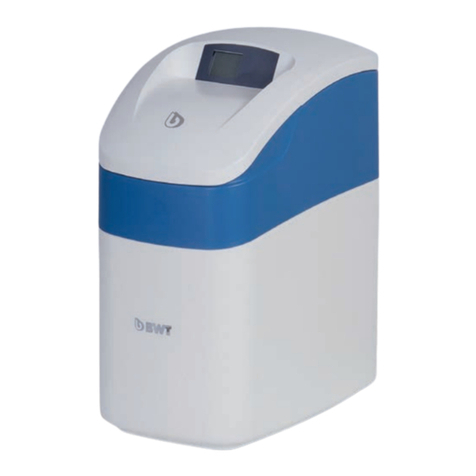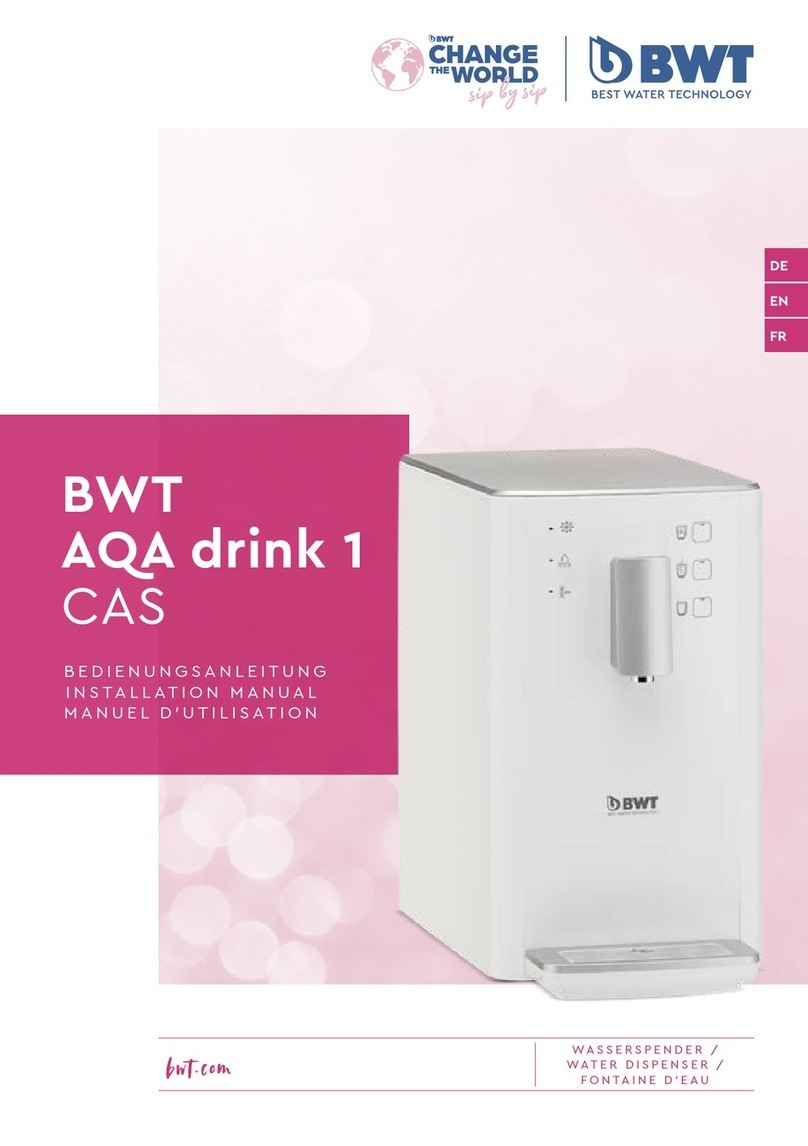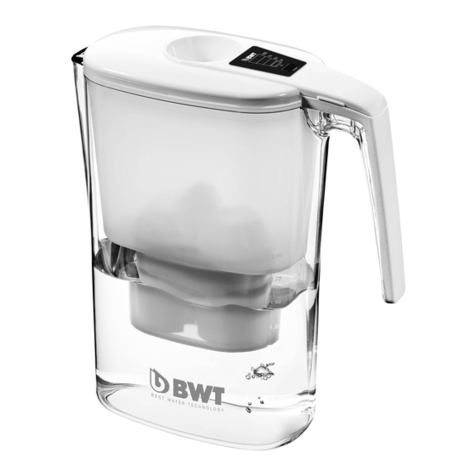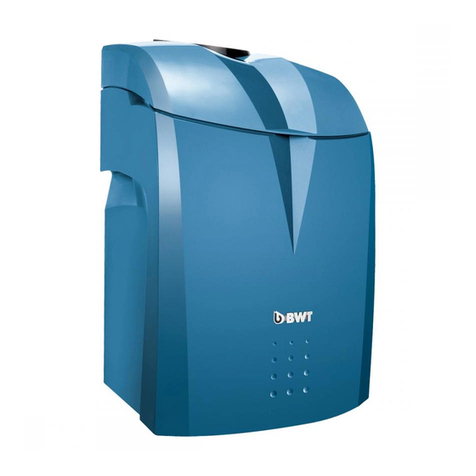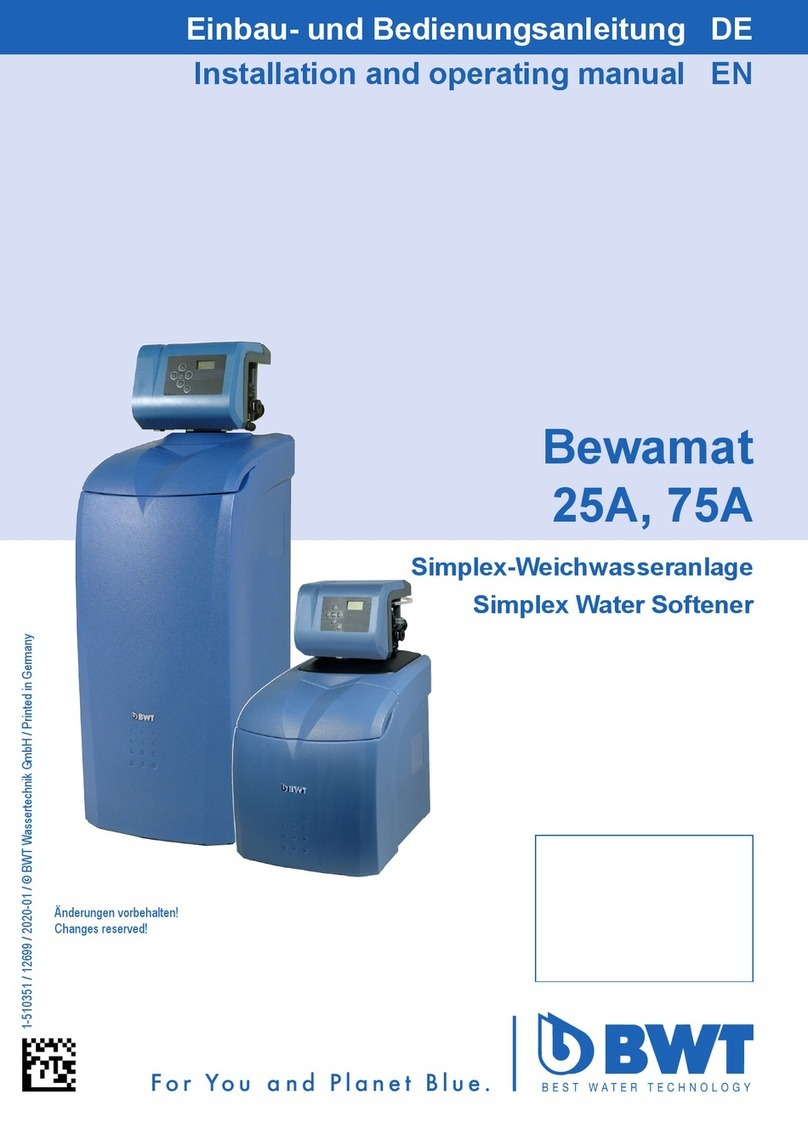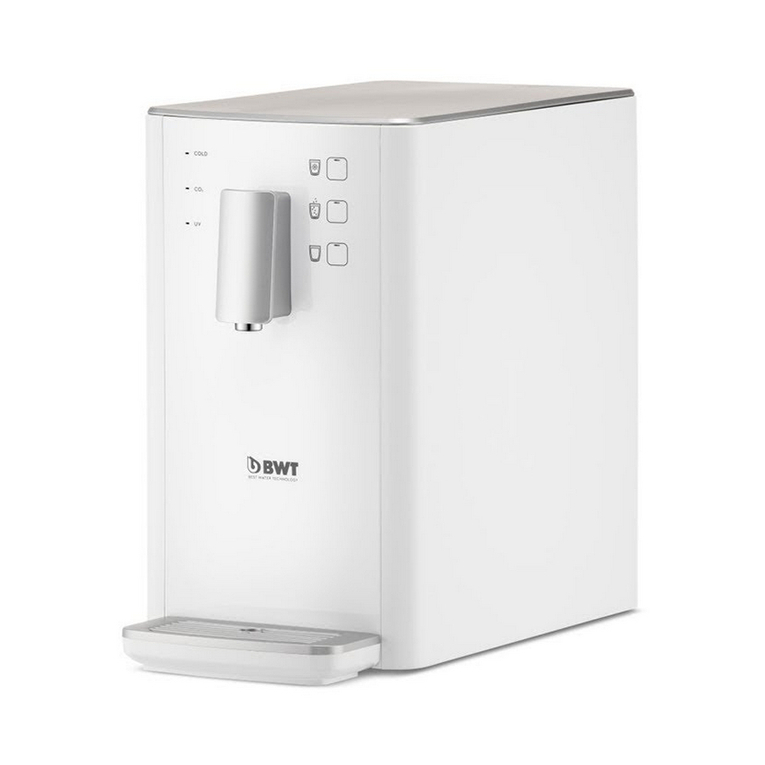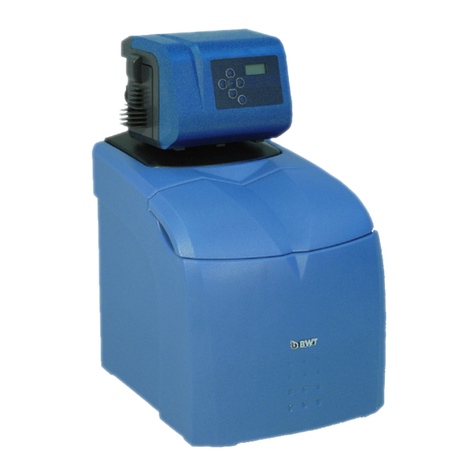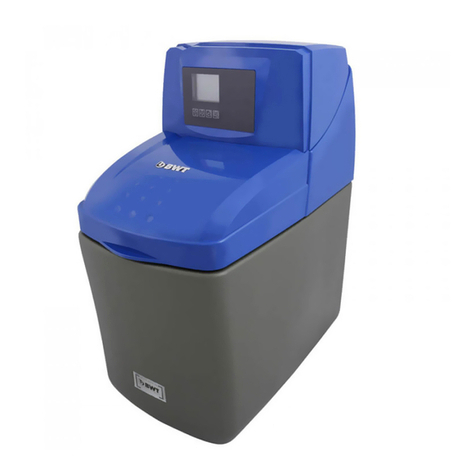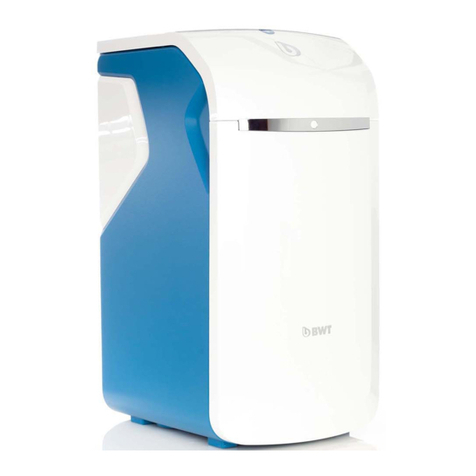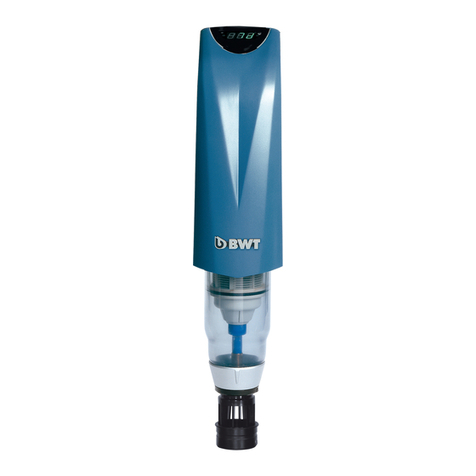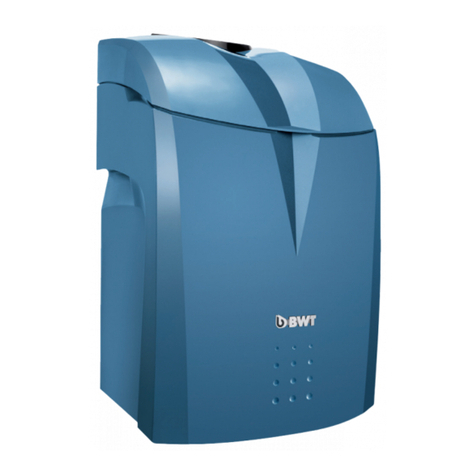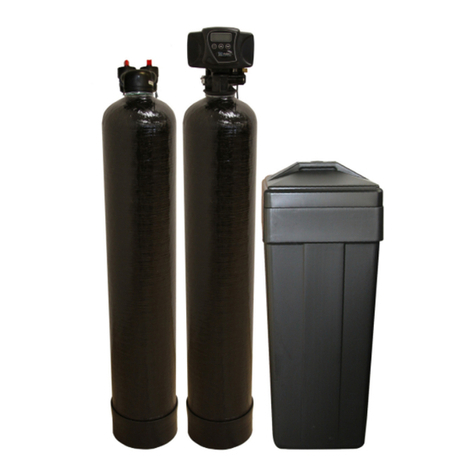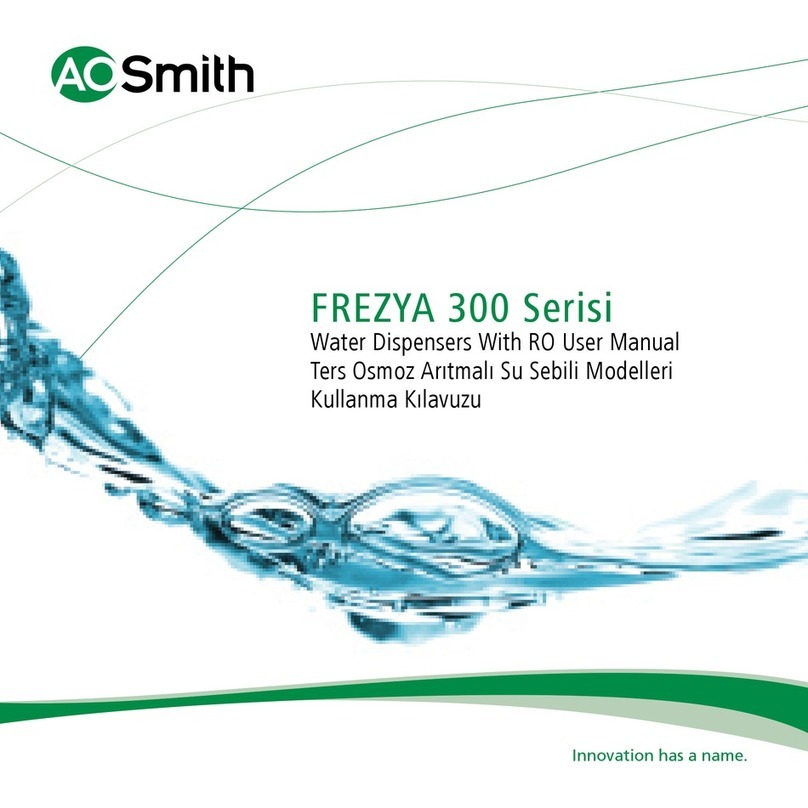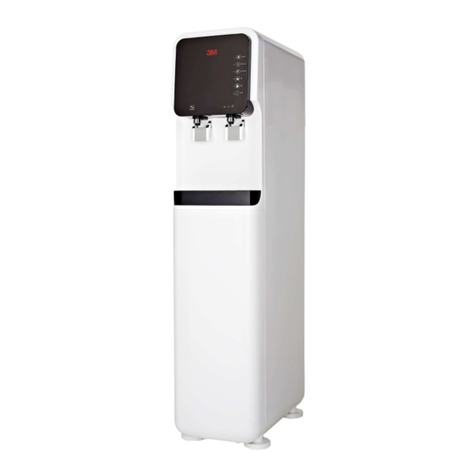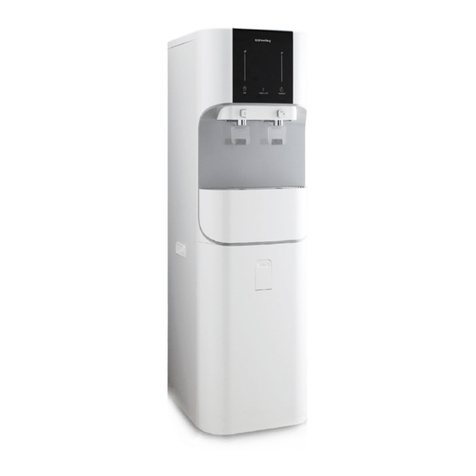
6
1. Before you begin
The installation of your new water softener is relatively straightforward. However, we
would recommend that either a qualified plumber or a person with relevant plumbing
experience carries out the installation.
Before embarking on the installation, please ensure you have familiarised yourself with
both these instructions and the components required to complete the installation.
2. Positioning the water softener
Please measure your water softener to ensure that it will fit into the area you are placing
the unit into. PLEASE remember to include additional space for connecting pipe work in
your calculations along with the regular access that is needed for topping the unit up with
salt and future service.
Where possible, the distance of both the incoming water supply and nearest drain should
be kept to a minimum. Two metres is an ideal distance, however, longer distances are
permissible, dependant on the incoming water pressure.
Please remember the weight of your new water softener will increase considerably once
installed and filled with salt. Therefore, please ensure your chosen location is strong
enough to support an approximate total weight of 50 Kg.
Your new water softener has been designed to operate efficiently and effectively with an
incoming water pressure of between 1.7 to 5 BAR. If your water supply is likely to fall
outside these limits, then we would recommend that a booster pump or pressure-
limiting valve should be fitted respectively.
PLEASE NOTE: UK Water Regulation guidelines on the installation of water softeners indicate that a minimum of one tap
is left as a source of untreated water / drinking water within the home. It is also recommended that any garden taps should
also be left untreated.
If the property is to be left unattended for any length of time e.g. holidays, the water softener should be bypassed /
isolated from the mains water supply by reversing the 3 valve positions as shown in the installation diagram on page 8.
After prolonged periods of non-use, ensure inlet and outlet valves are open and bypass valve is closed and start a manual
regeneration as described on page 14.
Important - do not install the water softener where it, or its connections (including the
drain overflow lines) will be subject to temperatures under 5ºC or above 40ºC.
INSTALLATION AND
OPERATING CONSIDERATIONS
PART ONE
INSTALLATION AND
OPERATING CONSIDERATIONS
There are several types of plumbing systems in common use:
1) Static Head – These systems are fitted with storage tanks. The water softener can be
installed using the standard 15mm or 22mm installation kit supplied with your water
softener.
2) Systems using Combination Boilers (15mm) – For these systems, we recommend that
your water softener be “hard plumbed” using copper tube of flexible high flow braided
hoses.
3) Unvented Fully Pressurised Systems (22mm) –As for combination boilers above.
The water softener should be installed within a container with no less than100 litre
capacity, to which there should be connected an overflow pipe of no less than 20mm
diameter. The overflow should be connected at the bottom of the container and not less
than 150mm below the height of any electrical components mounted on the water
softener. It is recommended that an anti vacuum valve be fitted to the inlet pipework
supplying the water softener.
3. Loft installation
If you are planning to install the water softener above ground level e.g. In the loft,
the following instructions should be strictly adhered to.
4. Plumbing systems
5. Backflow prevention device
Your water softener installation must include at least one drinking water tap that is
not fed by the water softener.
It is recommended that individuals on a low sodium diet should follow the Department of
Health's advice that water from a domestic water softener should not be used for
drinking or cooking. Softened water contains a small amount of sodium, it has been
calculated that 1 pint of softened water contains a similar amount of sodium as two slices
of white bread or ¼ pint of milk.
Water that is used for mixing powdered milk for babies must only be taken from an un-
softened mains tap as some powdered milks and softened water both contain sodium for
which young babies have a limited tolerance.
6. Drinking water
P RA T ENO
When fitted to the supply feeding a single dwelling, a check valve complying with BS6282
Part 1 must be fitted on the cold water feed prior to the installation. All other types of
installation require the fitting of a double check valve.
INSTALLATION AND
OPERATING CONSIDERATIONS
The installation of your new water softener is relatively straightforward. However, we
would recommend that either a qualified plumber or a person with relevant plumbing
experience carries out the installation.
Before embarking on the installation, please ensure you have familiarised yourself with
both these instructions and the components required to complete the installation.
2. Positioning the water softener
Please measure your water softener to ensure that it will fit into the area you are placing
the unit into. PLEASE remember to include additional space for connecting pipe work in
your calculations along with the regular access that is needed for topping the unit up with
salt and future service.
Where possible, the distance of both the incoming water supply and nearest drain should
be kept to a minimum. Two metres is an ideal distance, however, longer distances are
permissible, dependant on the incoming water pressure.
Please remember the weight of your new water softener will increase considerably once
installed and filled with salt. Therefore, please ensure your chosen location is strong
enough to support an approximate total weight of 50 Kg.
Your new water softener has been designed to operate efficiently and effectively with an
incoming water pressure of between 1.7 to 5 BAR. If your water supply is likely to fall
outside these limits, then we would recommend that a booster pump or pressure-
limiting valve should be fitted respectively.
PLEASE NOTE: UK Water Regulation guidelines on the installation of water softeners indicate that a minimum of one tap
is left as a source of untreated water / drinking water within the home. It is also recommended that any garden taps should
also be left untreated.
If the property is to be left unattended for any length of time e.g. holidays, the water softener should be bypassed /
isolated from the mains water supply by reversing the 3 valve positions as shown in the installation diagram on page 8.
After prolonged periods of non-use, ensure inlet and outlet valves are open and bypass valve is closed and start a manual
regeneration as described on page 14.
Important - do not install the water softener where it, or its connections (including the
drain overflow lines) will be subject to temperatures under 5ºC or above 40ºC.
INSTALLATION AND
OPERATING CONSIDERATIONS
PART ONE
INSTALLATION AND
OPERATING CONSIDERATIONS
BWT VOSFT Water Softener Dec 2015 20pp A5.indd 6 17/02/2016 08:45


